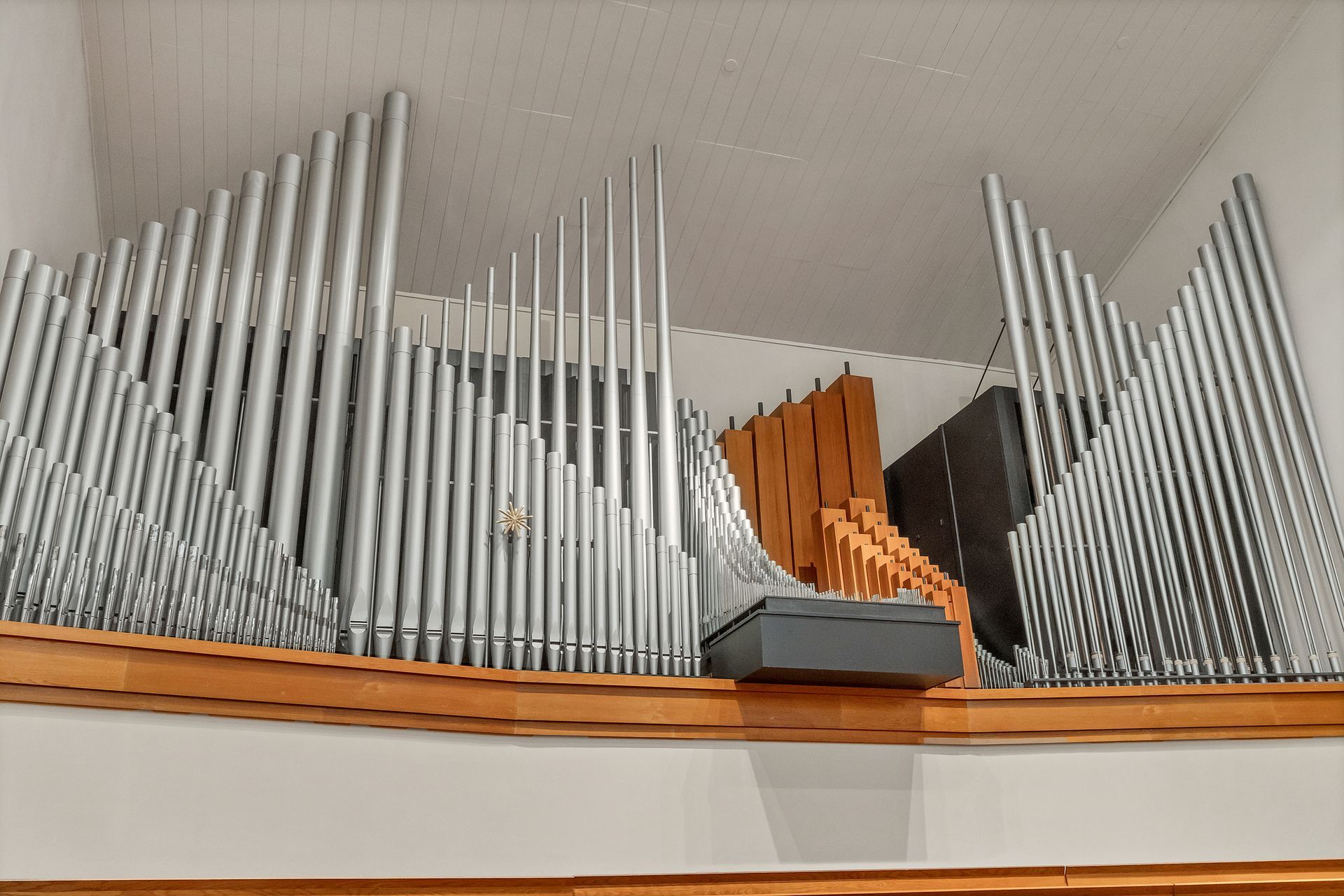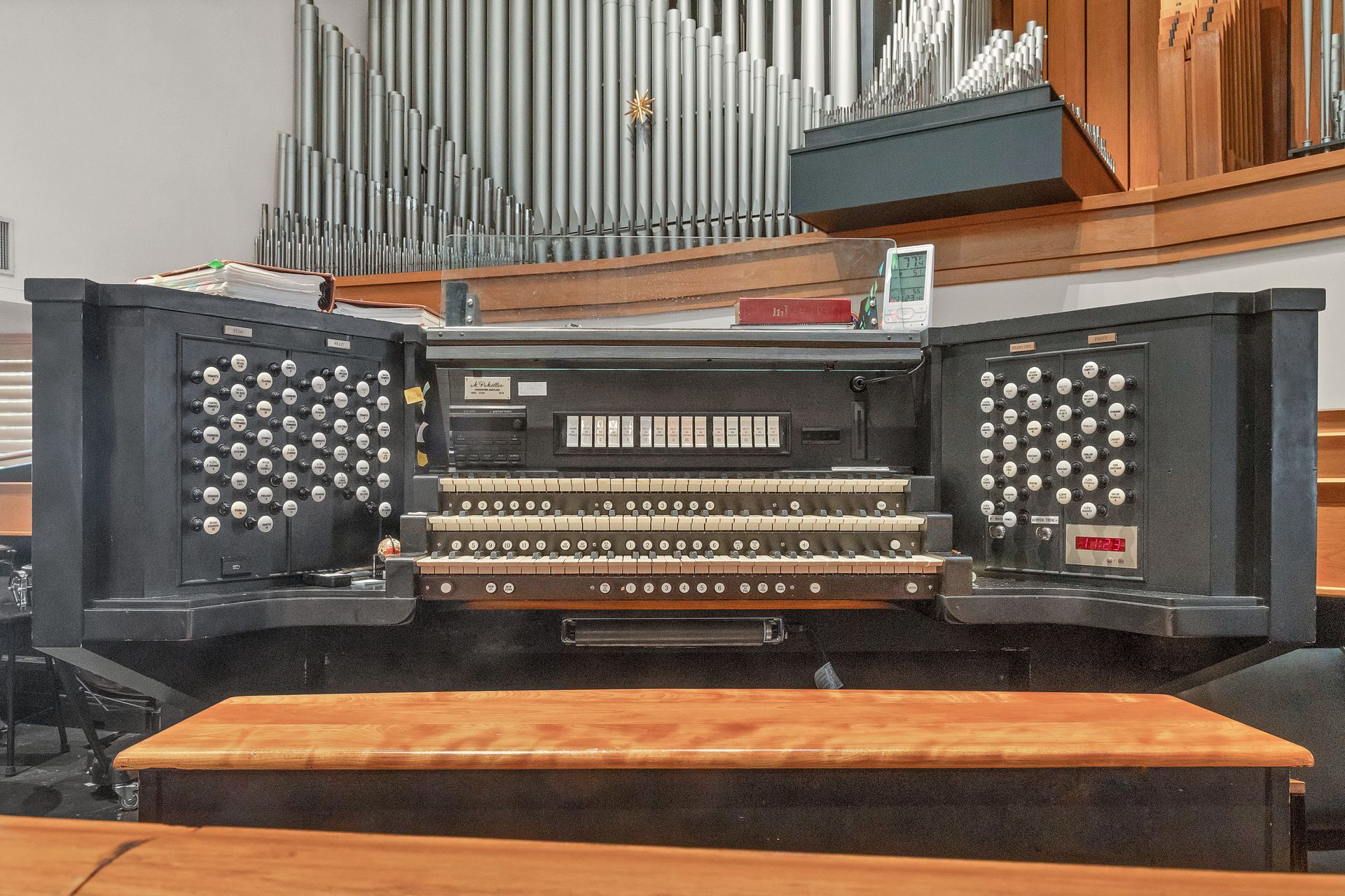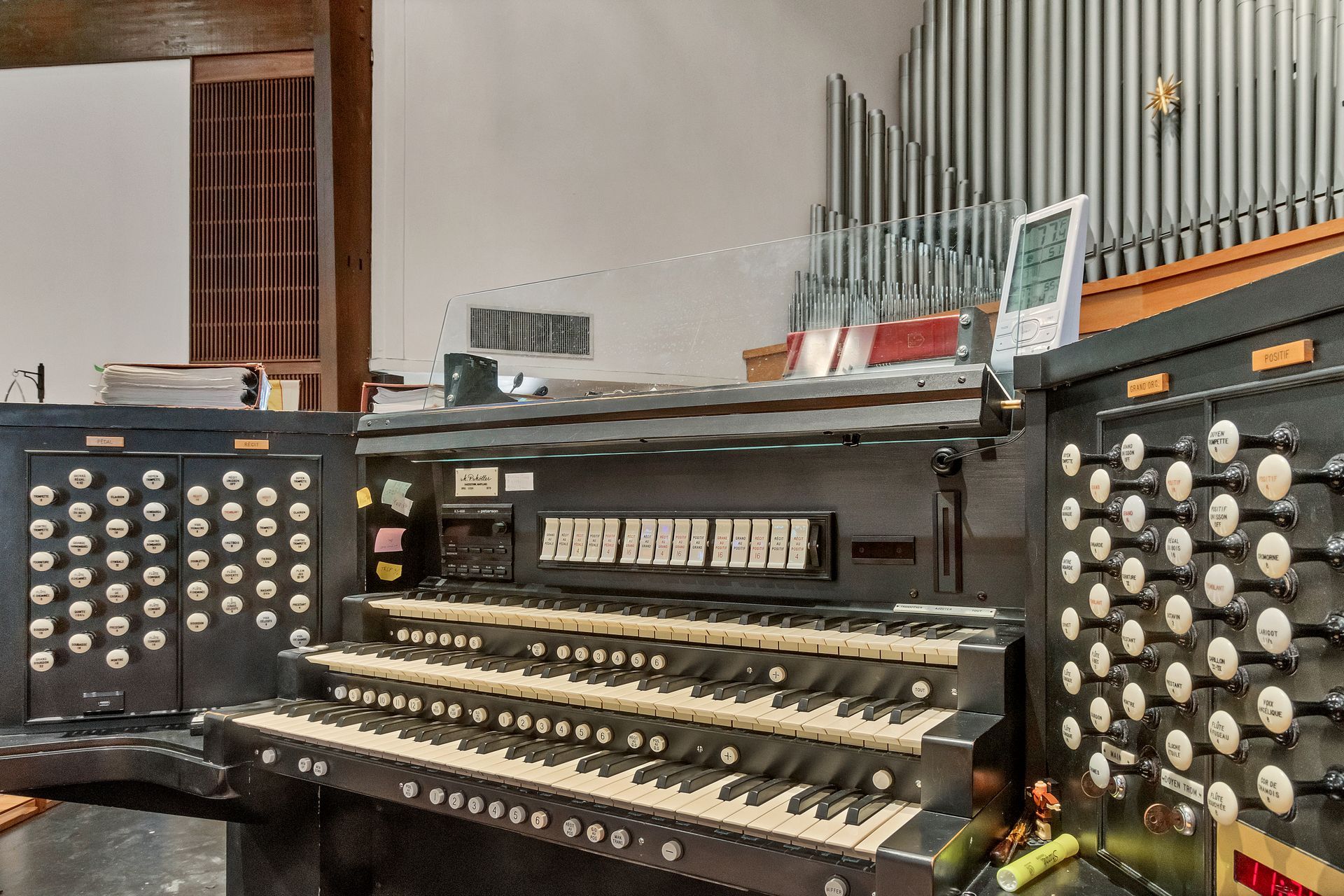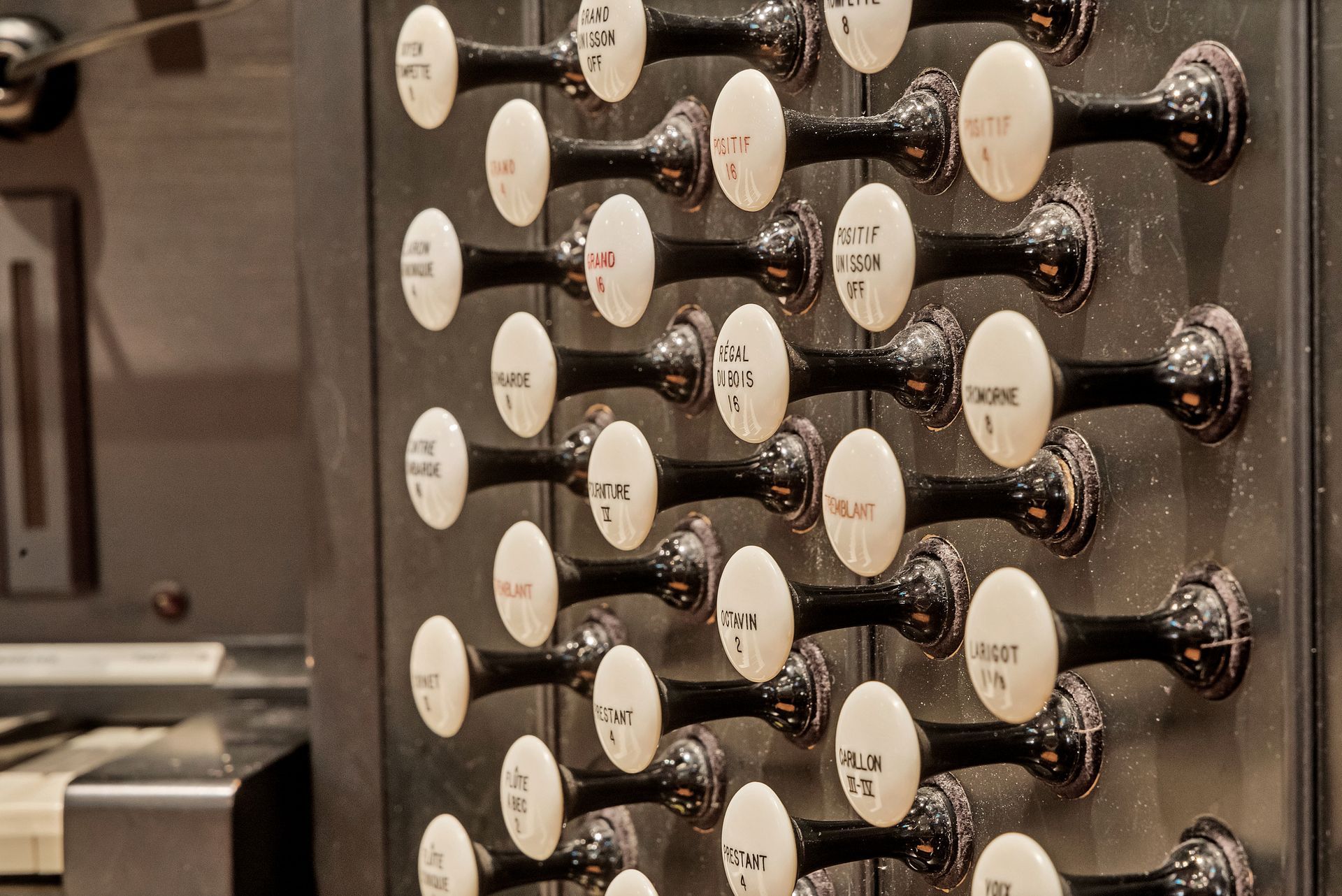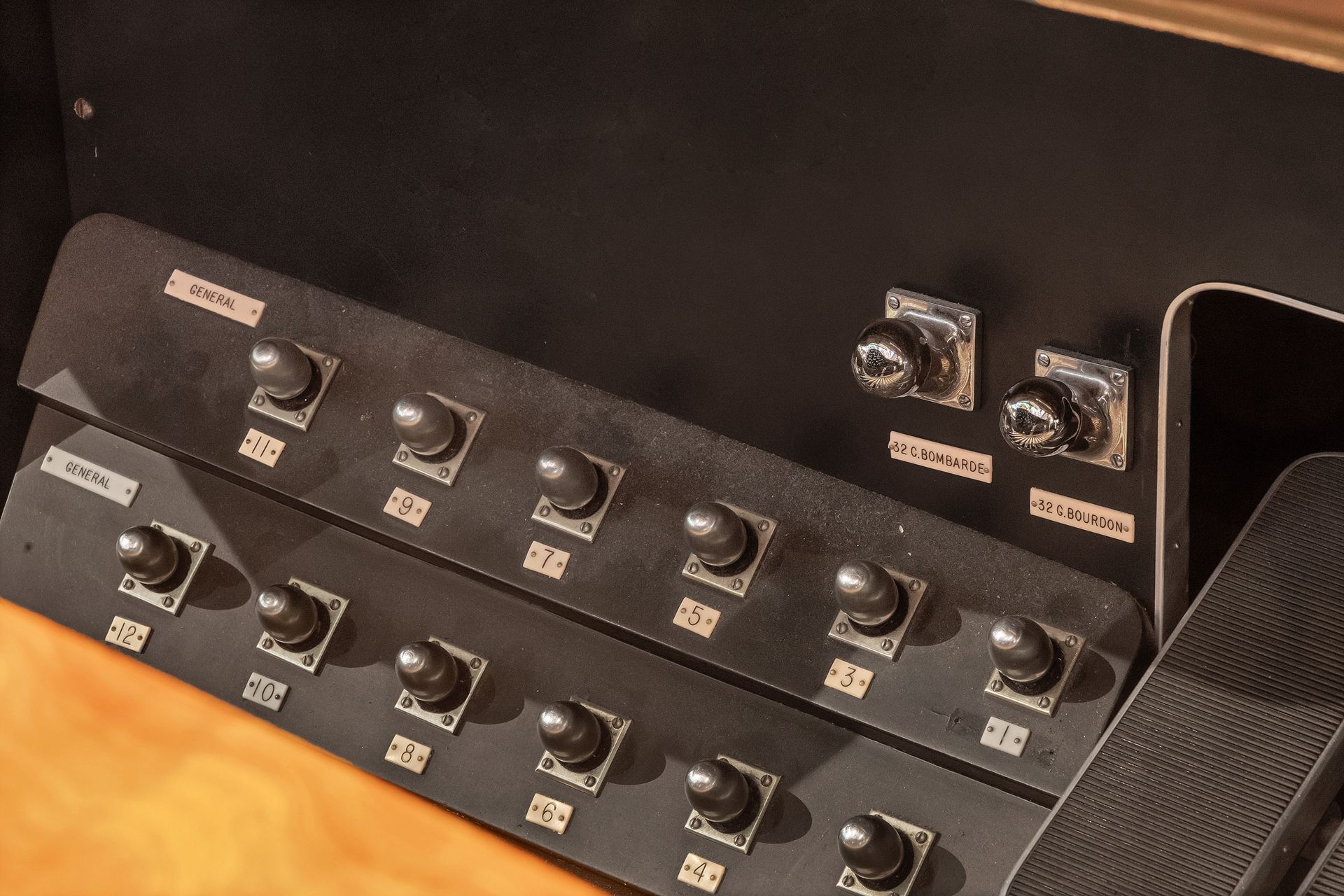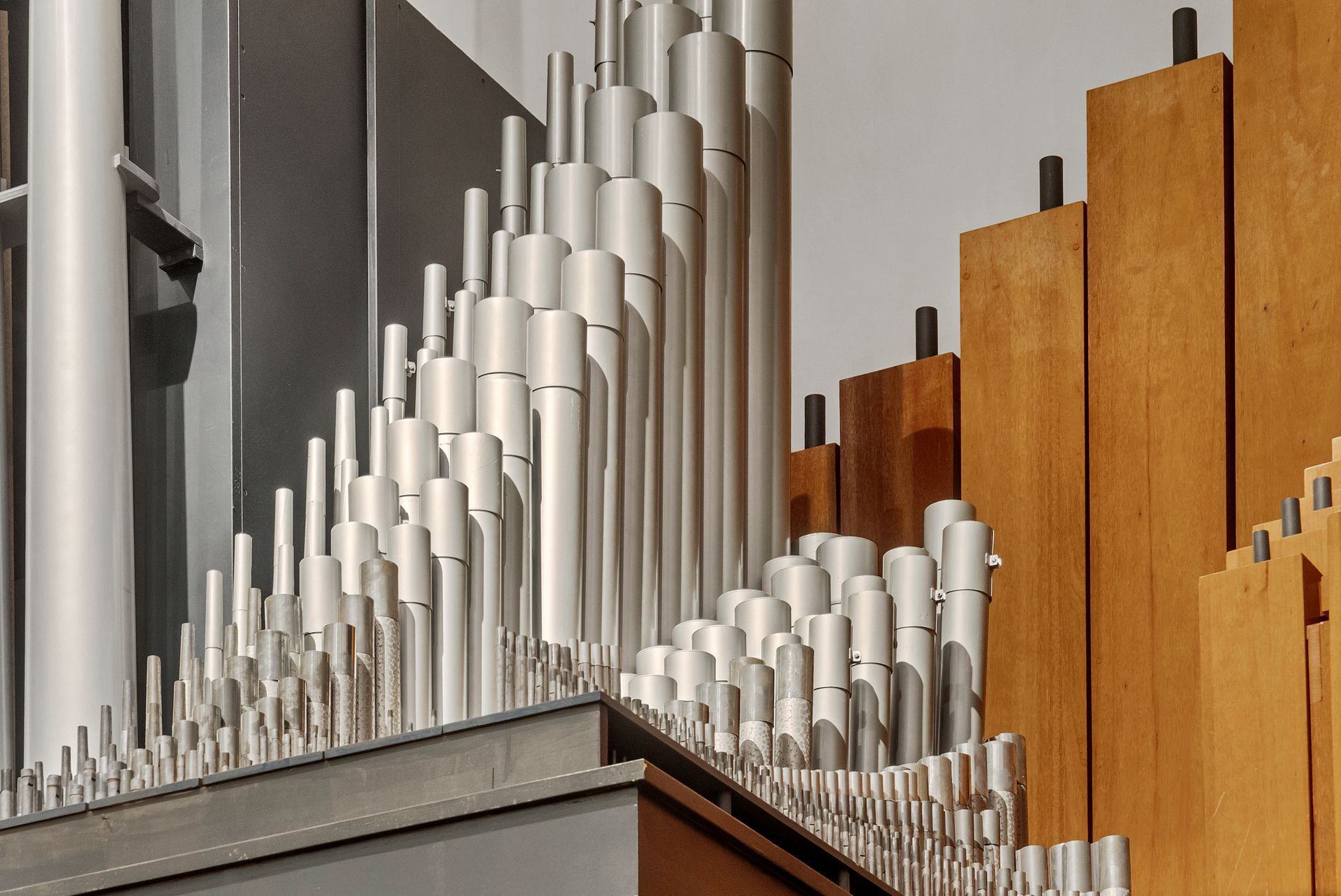The St. Boniface Organ
M P Möller, Opus 11334 (1979)
Weiler-Ambrosino (1997)
~ Stradtman (2011)
This instrument leads us all during worship and draws the community at large into our church through our concerts and recitals. The organ’s tonal design was inspired by both the instruments of Bach’s time and the great cathedral instruments built in 19th century France. The instrument also incorporates sounds useful for anthem accompaniment in the English-American Episcopal tradition, and ethereal effects suitable for the quieter portions of the service. This eclectic approach has served our music program well, leading the congregation in hymns, supporting the choir and providing a thorough palette of color to serve the organ literature. In the fall of 1997 each of the organ’s 2,904 pipes went through a tonal rehabilitation process in order to achieve optimum performance and balance, thanks to the artistry of Jeff Weiler and Jonathan Ambrosino, two of the most sought-after people in America in this specialized artistic field.
Organ Specifications and History
The Organ at Saint Boniface Episcopal Church was built in 1979 by M P Möller of Hagerstown, Maryland, as their Opus 11334. The instrument is based on a design by Ministers of Music Don B. Ryno and Seth D. Wertz, with the intention that the organ should reveal a specifically French bias. Apart from the nomenclature and fiery Recit reeds, the instrument was more typical of its builder’s other work, speaking within the American eclectic vernacular of its day.
In the Autumn of 1997, the church’s musicians, Dr. Robert Reeves and Seth Wertz engaged Jeff Weiler to revoice all the fluework and regulate the reeds of the organ. Mr. Weiler invited Jonathan Ambrosino to collaborate in the endeavor. Foremost was a desire for a stronger, more melodically oriented ensemble (both in the treble and bass) with clearer, brighter principal choruses and increased definition throughout. What began as a corrective process of tonal rehabilitation – without the benefit of replacement or re-scaling of pipes – gradually revealed itself as a more significant musical opportunity.
Though un-encased, the organ within this unusual hexagonal shaped church is ideally sited in a wide, shallow loft whose angled side walls and an upwardly sloping ceiling lend excellent projection of tone into the reverberant church. In such an environment, it was possible to revoice the principal choruses in a strong, classical manner, in which the pipes of any given pitch are voiced at much the same power. Flutes and strings were similarly emboldened, yielding more interesting timbres and greater melodic intensity. Merely re-regulated, the fine Gallic sounding chorus reeds remained much as before. The en-chamade trumpet was left virtually untouched as a heroic solo reed and as a testament to the abilities and ideals of Möller’s renowned reed voicer, Adolf Zajic.
Part of the challenge in the revoicing came in attempting to provide ways around some of the unusual gaps in the specification. While luxuriously equipped with an en-chamade reed, two 32’ stops and three sets of Celestes, more basic registers (Grand 2½’ and 2’, Hautbois, Flûte harmonique) were lacking. A carefully balanced tonal structure, both within stops and between divisions was the first step in addressing musical demands. Other refinements, particularly in the re-balancing of the color reeds and the 4’ Flutes, allowed for example, the Hautbois tone to be simulated through unusual combinations. Finally, two minor tonal changes overcame what voicing alone could not: recomposing the Grand Mixture one-half octave lower for better cohesion; and deriving an octave tierce out of the former carillon mixture, to give a truer sesquialtera voice (played an octave lower) than either of the alternative cornet registrations.
Creating a fine church organ was the centerpiece of the revoicing project with the additional hope that its balances and timbres might lend themselves to a good cross-section of organ music, particularly the French symphonic repertoire. The result is an eclectic American organ with a French accent – essentially the style of instrument for which Marcel Dupré conceived most of his concert music – justified, in the hopes of Reeves and Wertz, by its choice for the recording by Jeremy Filsell of the complete works. Listen and make your own judgement!
In 2011, under the direction of Music Minister, Neil Page, the console was refurbished and the console action changed from pneumatic to electric. The pneumatics had become unreliable and electrification provided greater flexibility for the player and allowed freer mobility of the console. All improvements were done by Carl Stradtman, who maintains the St. Boniface Church organ. At the same time the much-needed Hautbois was added to the Récit, providing both a gentle chorus reed and a distinctive solo voice. The organ now comprises 49 ranks and 3180 pipes.
For a printable brochure of the Boniface Organ, complete with organ specifications, click here.
For More Information About
The St. Boniface Organ
Contact Details
Mailing Address:
St. Boniface Episcopal Church
5615 Midnight Pass Rd,
Sarasota, FL 34242
Main phone number:
(941) 349-5616
Fax: (941) 349-0519
St. Boniface Episcopal Church is tax-exempt under IRS code 501(c)(3), your donations may be tax-deductible.
All Rights Reserved | St. Boniface Episcopal Church on Siesta Key

